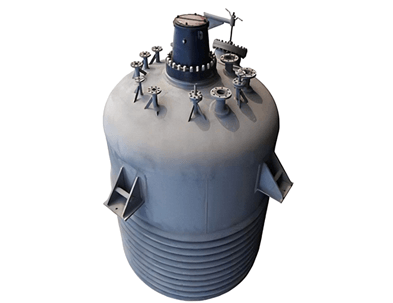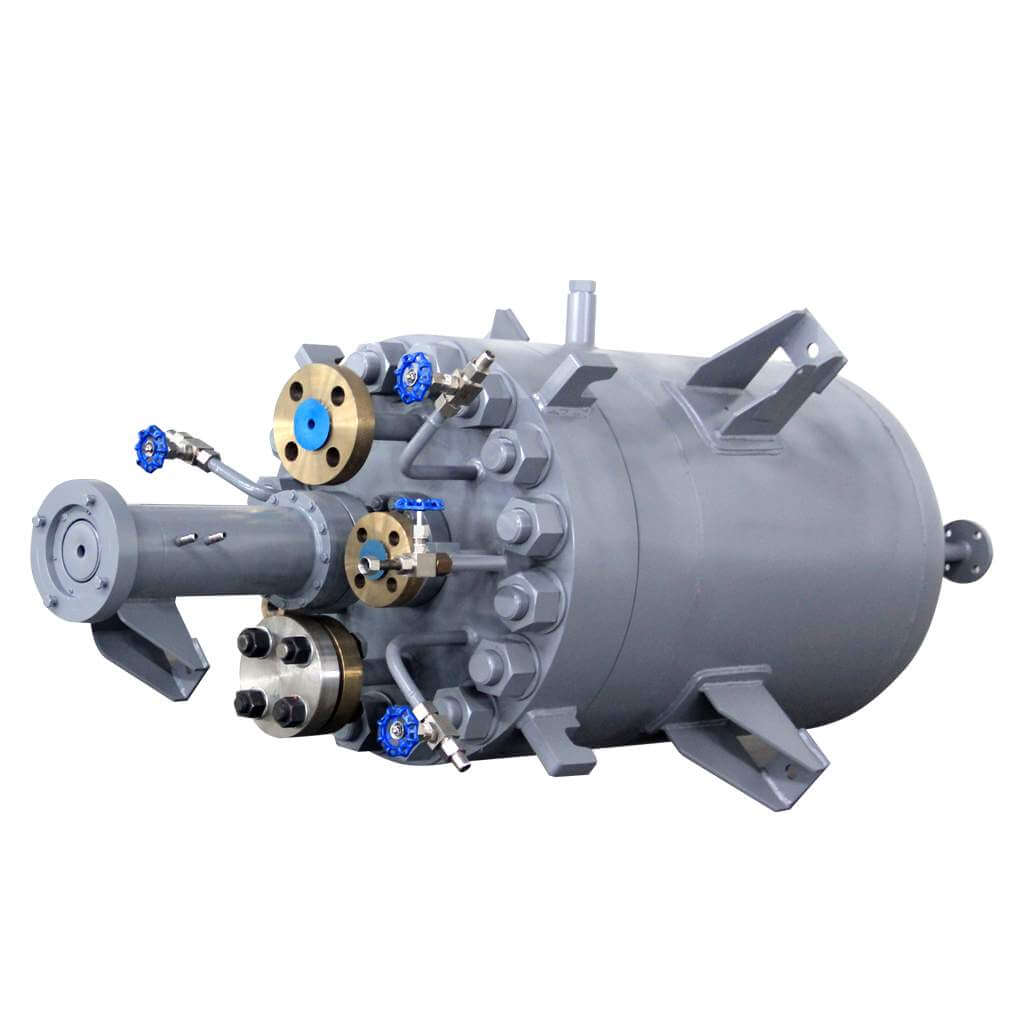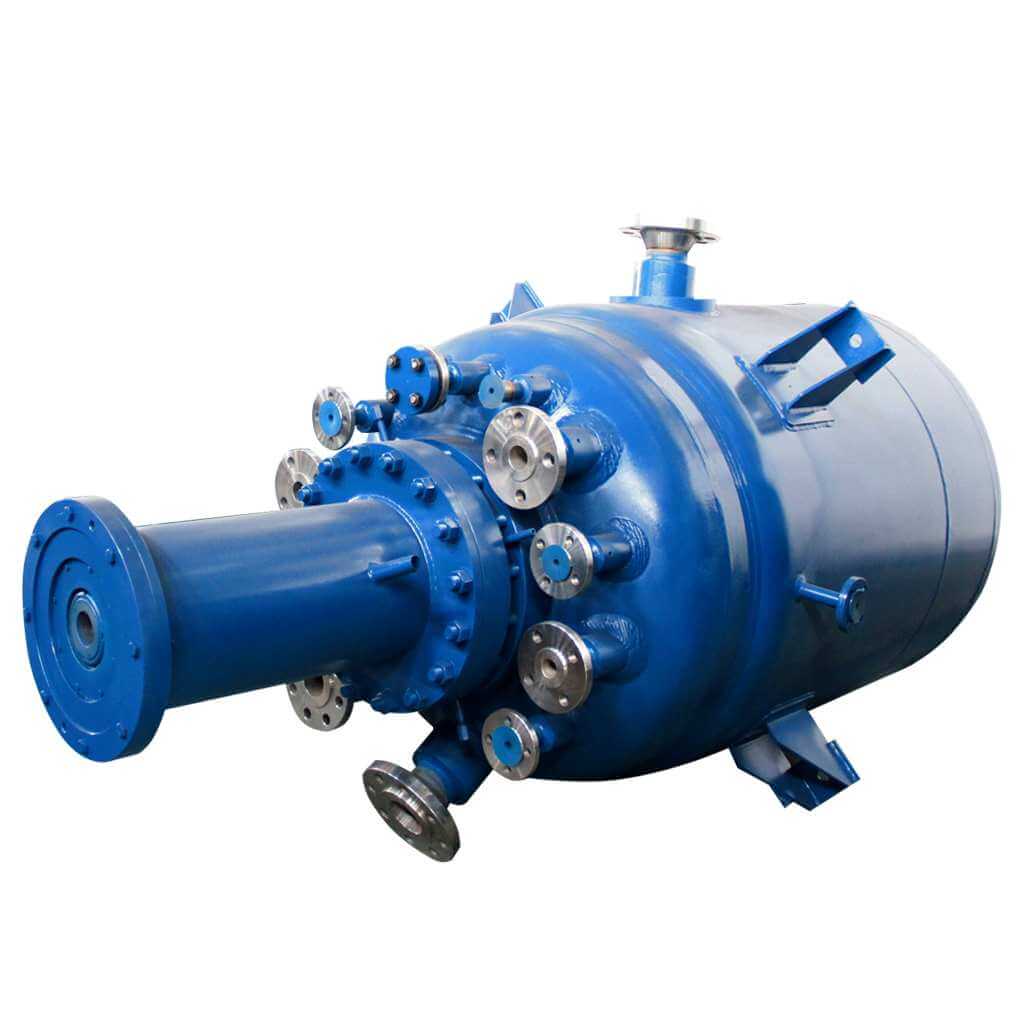

Hydrogenation Reactor
Hydrogenation Reactor:used in chemical synthesis, pharmaceutical manufacturing, food processing, and other fields.
Material
stainless steel (316, 304), carbon steel, others
Capacity (L)
10-10000+
Mixing system
anchor, paddle, frame and others
Heating system
electric heating, oil heating and others
Hydrogenation reactors are widely used in various catalytic reaction speeds, high-pressure and high-temperature generation, hydrogenation reactions, vapor-liquid two-phase, liquid-liquid two-phase, chemical reactions, corrosion detection, precision processing, supercritical extraction, and other applications. Mainly distributed in petrochemical equipment, organic chemistry, pharmaceutical industry, polymer synthesis, metallurgical industry, and other industries. At the same time, it has the characteristics of heat resistance, corrosion resistance, and high production capacity.
Request a quoteThe hydrogenation reactor consists of a container and a high pressure pump. When a high-pressure pump injects hydrogen gas into the container, the gas pressure inside the container gradually increases. When the gas pressure reaches a certain value, a chemical reaction will occur. In a hydrogenation reactor, hydrogen gas reacts chemically with chemicals to form new compounds. At the same time, the speed and effect of the hydrogenation reactor can be adjusted by controlling the pressure and temperature of hydrogen.

Design requirements for hydrogenation reactor
Pressure and temperature control: The hydrogenation reaction needs to be carried out under a certain pressure and temperature, so the design of the hydrogenation reactor must be able to provide a stable pressure and temperature control system.
Material selection: The material of the hydrogenation reactor should have corrosion resistance, high-temperature resistance, pressure resistance, and other characteristics to ensure the safety and stability of the reaction process.
Hydrogenation reactor volume: The volume of the hydrogenation reactor needs to be determined according to the properties of the reacting substances and reaction requirements. If it is too large or too small, it will affect the reaction effect.
Stirring system design: The stirring system can promote the mixing and uniformity of reactants, thereby improving reaction efficiency and product purity.
Safety measures: The hydrogenation reactor must have complete safety measures, such as explosion-proof devices, leakage alarm systems, etc., to ensure the safety of operators and the environment.
Operation convenience: The operation interface of the hydrogenation reactor should be simple and easy to understand, making it convenient for operators to operate and monitor the reaction process.

Precautions for hydrogenation reactor
The core equipment of the hydrogenation reactor is a self-priming gas-liquid reactor, which is composed of a high pressure reactor and a stirrer. The special height-to-diameter ratio of the hydrogenation reactor is stipulated, and coils and jackets are set up to meet the requirements for material preheating and reaction heat discharge. Technology requires a reasonable combination and optimization of various structures. The mixing device consists of a transmission mechanism, a hollow shaft, a shaft seal, a self-priming impeller, and an effective axial flow impeller. The high-speed operation of the self-priming hollow impeller can circulate a large amount of liquid in and out of the impeller. According to the Venturi injection principle, the liquid on the liquid surface passing through the hollow stirring shaft is the liquid sucked from the impeller at high speed. Therefore, the gas is continuously sucked into the deep liquid phase in the hydrogenation reactor and is dispersed after stirring to form a uniform gas-liquid mixed system. Realize effective gas-liquid contact, strengthen the gas-liquid mass transfer process, and shorten the gas-liquid reaction time. The function of the bottom effective axial flow propeller is to suspend the catalyst and evenly disperse the gas in the self-priming impeller within the hydrogenation reactor, including its bottom.
Since the hydrogenation reaction is a strongly exothermic reaction, the reaction heat of the hydrogenation reactor needs to be taken away with cooling water through the built-in coil and outer jacket. Depending on the reaction heat, reaction temperature, and reaction speed, the hydrogenation reactor can be designed with different cooling media, cooling processes, and different cooling areas. In industrial installations, the inner coils can be arranged in layers, and the cooling area can reach 8-12m2/m3. Heat exchangers can be placed outdoors when special heat transfer requirements are met.
Catalytic hydrogenation reactions are generally medium-to-high-pressure reactions and direct injection is very dangerous, so it is necessary to design a safety belt pressure injection system. This helps experimenters obtain catalyst-free samples safely and conveniently. Usually, the catalyst is added once. The special process requirement is to design a pressurized catalyst addition system so that the catalyst can be added safely during the reaction. The filtration of the catalyst is also very important. Different types of catalysts require different filtration systems, such as sedimentation inside and outside the hydrogenation reactor, microporous filtration, pressure filtration, etc. Safety filters and catalyst deactivation systems are also required in some filtration systems.
The hydrogenation reactor hydrogenation process generally includes a hydrogenation reaction system, a catalyst filtration system and other hydrogen sources, and supporting systems such as sampling, cooling, and product refining. Therefore, hydrogenation reactors are generally used for intermittent production and continuous production with special requirements. Therefore, in order to ensure the safety and stability of the reaction, strict safety measures and operating specifications need to be implemented for the hydrogenation reactor. It not only ensures the personal safety of the staff but also extends the service life of the hydrogenation reactor.




